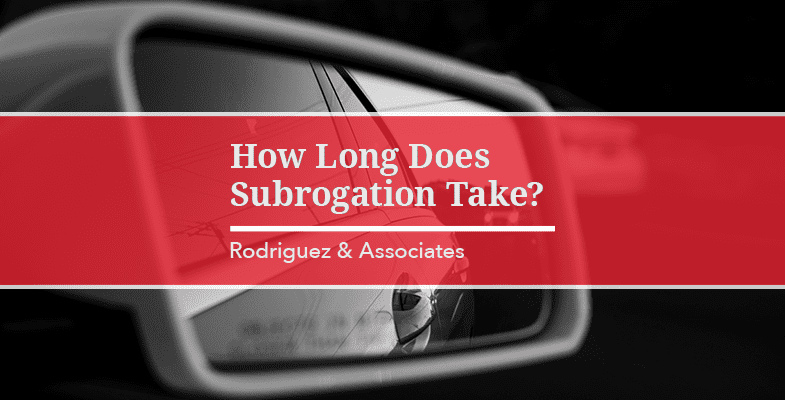When a driver causes an accident with another driver resulting in injuries and other damages, the injured driver will likely file an insurance claim against the at-fault driver’s insurance policy. If the at-fault driver does not have auto insurance, the injured driver’s insurance policy may cover the damages. Insurance companies have the right to pursue damages from negligent drivers and they do so to limit the losses paid out on claims.
For example, an uninsured driver hits another driver and causes $30,000 in total damages. Since the at-fault driver does not have insurance, the injured driver must file a claim against his or her own policy. The insurance company pays out the claim to the injured driver in accordance with the policy’s terms, and then the insurance company starts the subrogation process against the at-fault driver. The time required to complete subrogation typically hinges on the complexity of the claim. A Bakersfield personal injury lawyer can assess your case and explain your options.
What to Expect From Subrogation
A basic subrogation process in a simple car accident usually involves an injured driver, an at-fault driver, and each driver’s insurance company. The injured driver’s insurance company will typically expect the at-fault driver’s insurance company to pay for the damages in the claim, but if the two insurers cannot reach a mutually agreeable settlement, they will typically resort to covering their own policyholders’ damages. Next, the injured driver’s insurer will likely sue the at-fault driver’s insurer or look for a mediator or arbitrator to settle the matter.
Simple claims for accidents like rear-end collisions or other accidents where fault is obvious may still take up to 30 days to settle. The at-fault driver’s insurance carrier will either pay for the injured driver’s damages directly or reimburse the injured driver’s insurance company if necessary. Complex claims, such as those involving multiple drivers, can take a year or more to complete depending on available evidence. Each insurer will want to minimize liability, and they may move to litigation if they cannot reach a mutually agreeable settlement.
Ultimately, the time required to complete subrogation usually hinges on the complexity of the accident case and clarity of fault for the accident. If the drivers involved in a claim disagree on fault, or a claim involves several drivers that may all share some fault for an accident, the subrogation process can take quite a long time to finish. However, most drivers will have at least some protection available from their insurers during this process, and subrogation could potentially lead to reimbursement for any out-of-pocket expenses incurred during the subrogation process.
Benefits of Subrogation
The subrogation process may seem overly complex but in reality, this system is very beneficial to all drivers. Primarily, subrogation helps keep premium payments lower for insured drivers. Since auto insurance carriers can limit their liability through subrogation, there is less risk for the insurer when it comes to insuring a driver. Without the subrogation process, insurance carriers would likely raise premium rates to cover the cost of losses from third parties.
When a driver must file a claim against his or her own collision coverage during the subrogation process, the driver usually has a deductible he or she must pay out of pocket before his or her collision coverage applies. However, the injured driver’s insurer will seek reimbursement for the policyholder’s paid deductible during subrogation.
If you or a loved one recently had an accident and are unsure about how long the subrogation process will take in your case, a car accident attorney or a representative from your auto insurance carrier are likely the two best resources for more information about the subrogation process and how long it will take for a claim.
